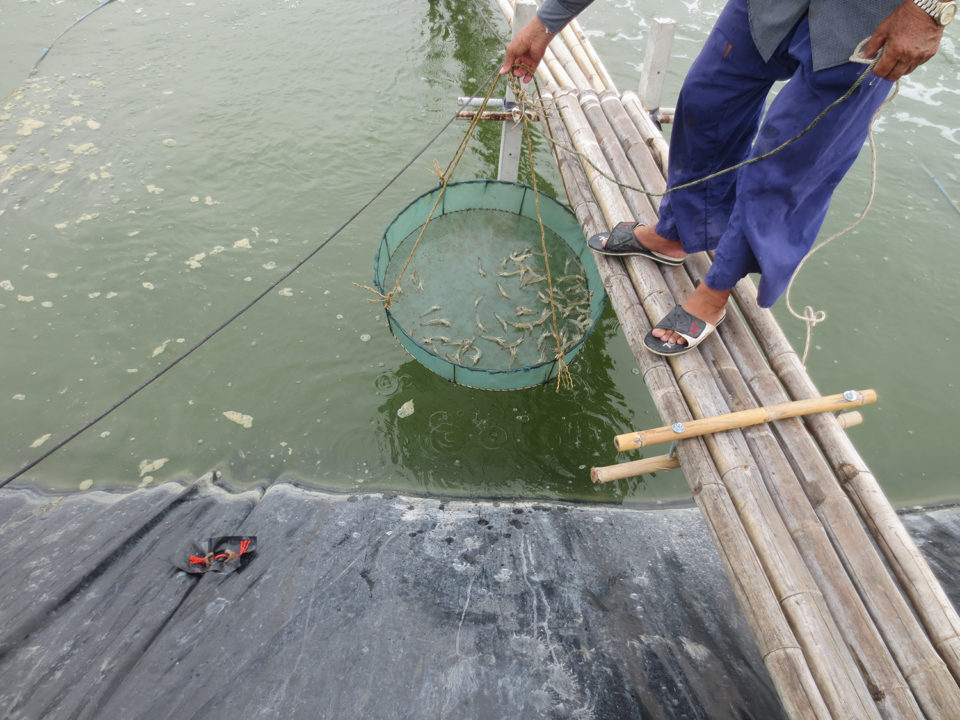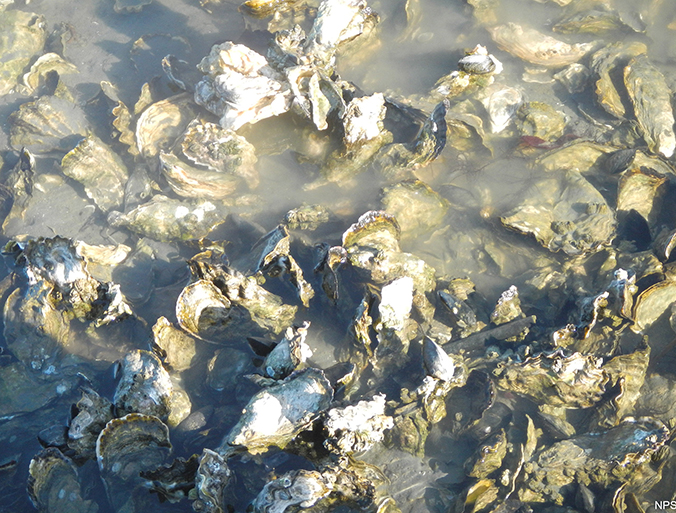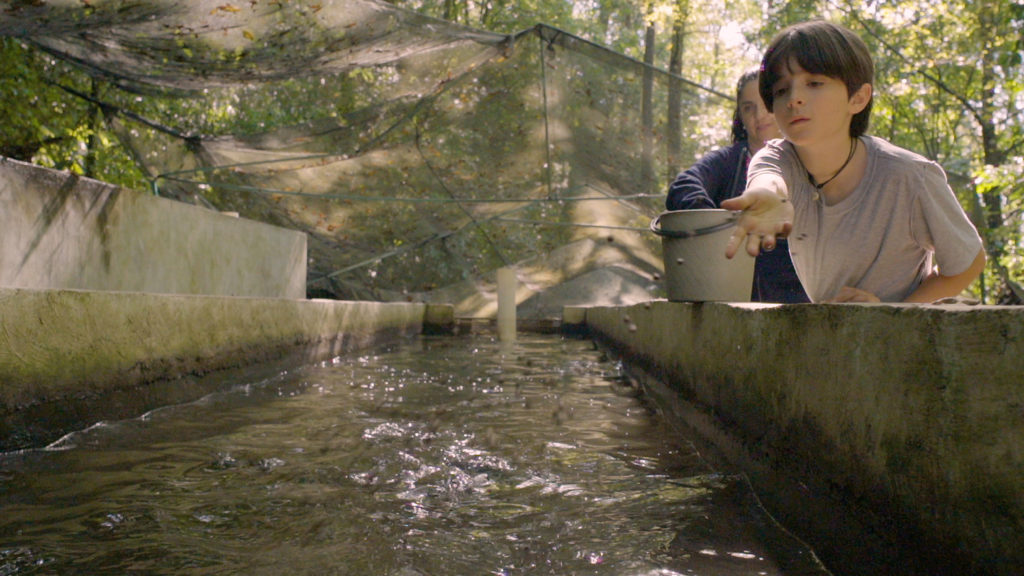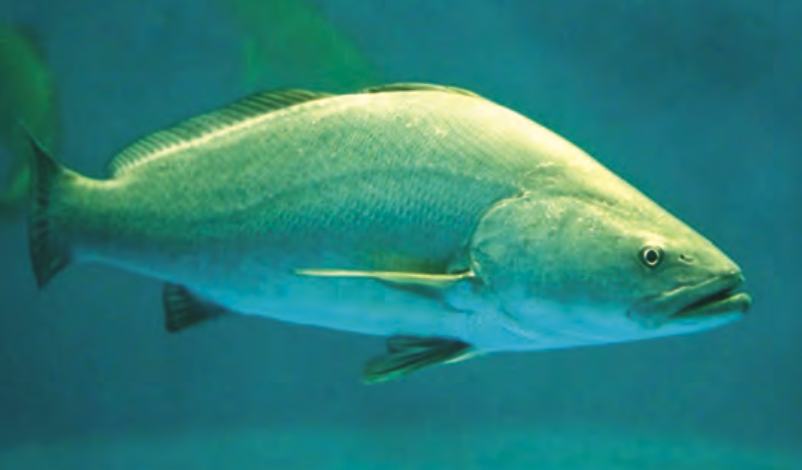Interest is high in aquaculture disease-diagnostics tools, but some say even the newest tech is too limited

The science of diagnosing shrimp diseases has come a long way since the 1970s, when farmers and pathologists still relied on old-fashioned methods to detect infection. A new generation of technology, portable PCR, now offers the potential for affordable, immediate, pondside diagnosis in easy-to-use handheld kits. But will it live up to the hype?
Experts say the technology could fill a need in the shrimp aquaculture industry, but it won’t be the silver bullet in fighting diseases like white spot virus.
“There are a number of companies that are all working on quick tests for pondside diagnostics, so I think this is a popular topic,” said George Chamberlain, president of the Global Aquaculture Alliance and a world-recognized shrimp-production expert.
The idea of PCR is to decentralize diagnosis, so that instead of sending tissue samples to a laboratory for analysis, and getting results back days or even weeks later, farmers are able to perform the tests themselves, on site, and get the results immediately.
“Some of these diseases can wipe out whole ponds within 24 to 48 hours, so waiting for two weeks for results to come back is sometimes not an option,” said Grant Stentiford, an aquatic animal pathologist with the Centre for Environment, Fisheries and Aquaculture Science (CEFAS) in the United Kingdom. Stentiford is co-Principal Investigator for the International Network for Shrimp Health, which received a $260,000 grant from the Newton Fund in 2017 for research and development on portable diagnostic kits.
The science at the heart of the technology is polymerase chain reaction, or PCR. Pioneered in the late 1990s, PCR testing allows clinicians to isolate a strand of DNA – for example, DNA unique to a specific pathogen – and replicate it through a process of heating and cooling. The process acts as an amplifier, rapidly increasing the number of copies of the target piece of DNA, making it easily detectable.
Both PCR, which yielded a simple positive/negative diagnosis, and the subsequent Quantitative PCR, which provides a count of the pathogen load, represented a huge step forward for disease detection, both in speed and accuracy, said Arun Dhar, a virologist and director of the Aquaculture Pathology Laboratory at the University of Arizona.
It’s limited in the number of diagnostics it can do. If shrimp already started dying, there’s very little you can do. You’ve just fulfilled your curiosity as to what’s killed your pond.
Previously, pathologists and veterinarians had diagnosed shrimp diseases using methods like histology, visually examining cells of animal tissue under a microscope to look for the telltale markings of infection. “(PCR) really changed the landscape of disease diagnostics, because the sensitivity is much higher,” and it generates diagnostic results much faster, Dhar said.
The next step, hopes Stentiford, is to take scientists out of the equation altogether, and put the technology directly in the hands of farmers. Handheld PCR devices are already being used in human medicine, including in testing for diseases like tuberculosis in developing countries, noted Dhar.
“The platform is there, but it hasn’t been taken into the world of aquaculture yet to its potential,” he said. “It’s a miniature form of the lab. If you can have a way to detect shrimp pathogens at the pond side, that’s the next generation of diagnostics in shrimp disease.”
But shrinking the technology comes with its own challenges, added Dhar. So far, prototype models have not been as sensitive as full-size PCR machines, resulting in more false negatives, he noted. They also have a more limited capacity. While a conventional laboratory might process around 90 PCR samples in an hour, the prototypes he’s seen could handle around a dozen. “In the rush to get something to market, we have to make sure we do not compromise quality,” Dhar said.
The technology also has limited uses, Chamberlain noted.
“It can only detect known pathogens,” he said. “PCR is super precise and super specific, but just because you find a negative for a certain pathogen doesn’t mean the organism is healthy – there could be other things going on.”
The technology doesn’t impress Robins McIntosh, senior VP of Charoen Pokphand Foods in Bangkok, Thailand, one of the world’s largest shrimp producers. “It’s just limited in the number of diagnostics it can do,” he said. “If you think you have white spot, you can go and test and say, ‘Yes, I have white spot.’”
The kits don’t offer a solution or help farmers treat dying shrimp, he noted, and if they produce a negative test result, “you still aren’t any closer to determining what it is.” Even if farmers successfully diagnose a disease like white spot with the kits, he asked, what then? “If they’ve already started dying, there’s very little you can do,” he said. “You’ve just fulfilled your curiosity as to what’s killed your pond.”
McIntosh also questioned the technology’s marketability. Many larger shrimp farms have on-site diagnostic laboratories, he said, while countries with developed aquaculture industries like Thailand and Vietnam already have a network of affordable, PCR-equipped labs that are readily available to smaller operators. McIntosh said he’d look to countries like Bangladesh, with a nascent shrimp industry that lacks the infrastructure, capital, and expertise to make laboratory testing widely available.
You want the test to be sensitive enough to pick up low levels of the virus, but not pick up other related pathogens that do not cause disease.
“That’s where I’d take my machine,” he said. “But how many units can you sell in Bangladesh?”
Stentiford agreed that portable PCR could find a use in developing countries, or in countries receiving international assistance to develop their aquaculture industries.
“In those countries, there are very few aquatic animal health professionals and centralized laboratories which are able to offer a rapid, cheap, and accurate testing service,” he said. In order to be viable, he said, the technology needs to be on par with lab testing for accuracy and sensitivity. “You want the test to be sensitive enough to pick up low levels of the virus, but not pick up other related pathogens that do not cause disease.”
Stentiford believes researchers would eventually figure out a way to meet that criteria, and that the limiting factor on the devices wouldn’t be technological; instead, it would come down to human users. Education and training would be important for a user group that would likely include smallholder farmers with limited scientific literacy, he said.
“The socio-economic factors need to be taken into account,” he said. “The price point needs to be right, and the buy-in for the user needs to be there as well.” Ideally, farmers would be encouraged to send diagnostic data via smartphone app, to allow authorities to both understand and manage important aquaculture diseases within their borders, Stentiford added.
“I think we’d all love to see something easy, convenient, reliable – and cheap,” Chamberlain said with a laugh. “I think the technology will probably get to that point, but several groups will compete, and I’m not sure who the winner will be.”
Follow the Advocate on Twitter @GAA_Advocate
Author
-
Ilima Loomis
Ilima Loomis is a freelance journalist in Hawaii who covers science, travel and business.
Tagged With
Related Posts

Health & Welfare
Born in Hawaii, SPF broodstock shrimp industry faces globalization
The next step for shrimp breeding will be developing animals that aren’t just disease-free, but increasingly resistant to multiple pathogens. The industry is globalizing, with suppliers setting up shop overseas. But its birthplace will always be Hawaii.

Responsibility
Two years after shutdown, California oyster farm remains a community hot-button
When one of California’s oldest oyster farms was shut down amid reports that it was degrading the environment, local observers took notice. Two years later, the case is still far from closed in the eyes of the farm’s supporters and its critics.

Intelligence
A motive, and a market, for farmed fish in Mexico
Boasting ample areas for aquaculture and a robust domestic demand for seafood – not to mention its close proximity to the U.S. market – a land of opportunity lies in Mexico. Fish farming is primed to meet its potential south of the border.

Responsibility
Aquaculture gives endangered totoaba a fighting chance
The tenuous fate of a pint-sized porpoise, the critically endangered vaquita, is linked to a fish targeted by poachers fueling China’s appetite for maws. The vaquita remains in peril, but aquaculture presents some hope for the totoaba.


